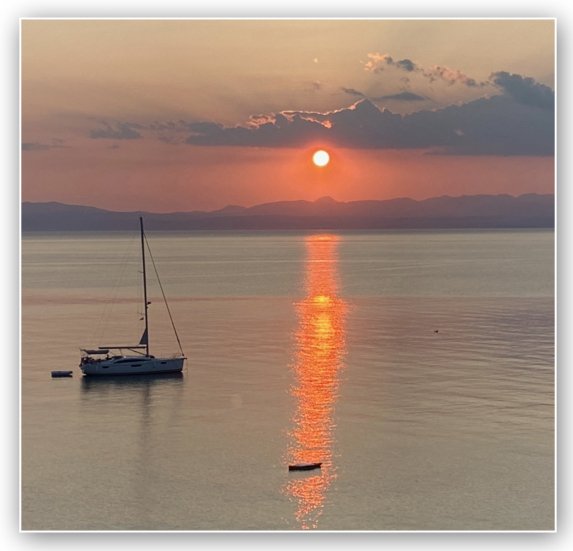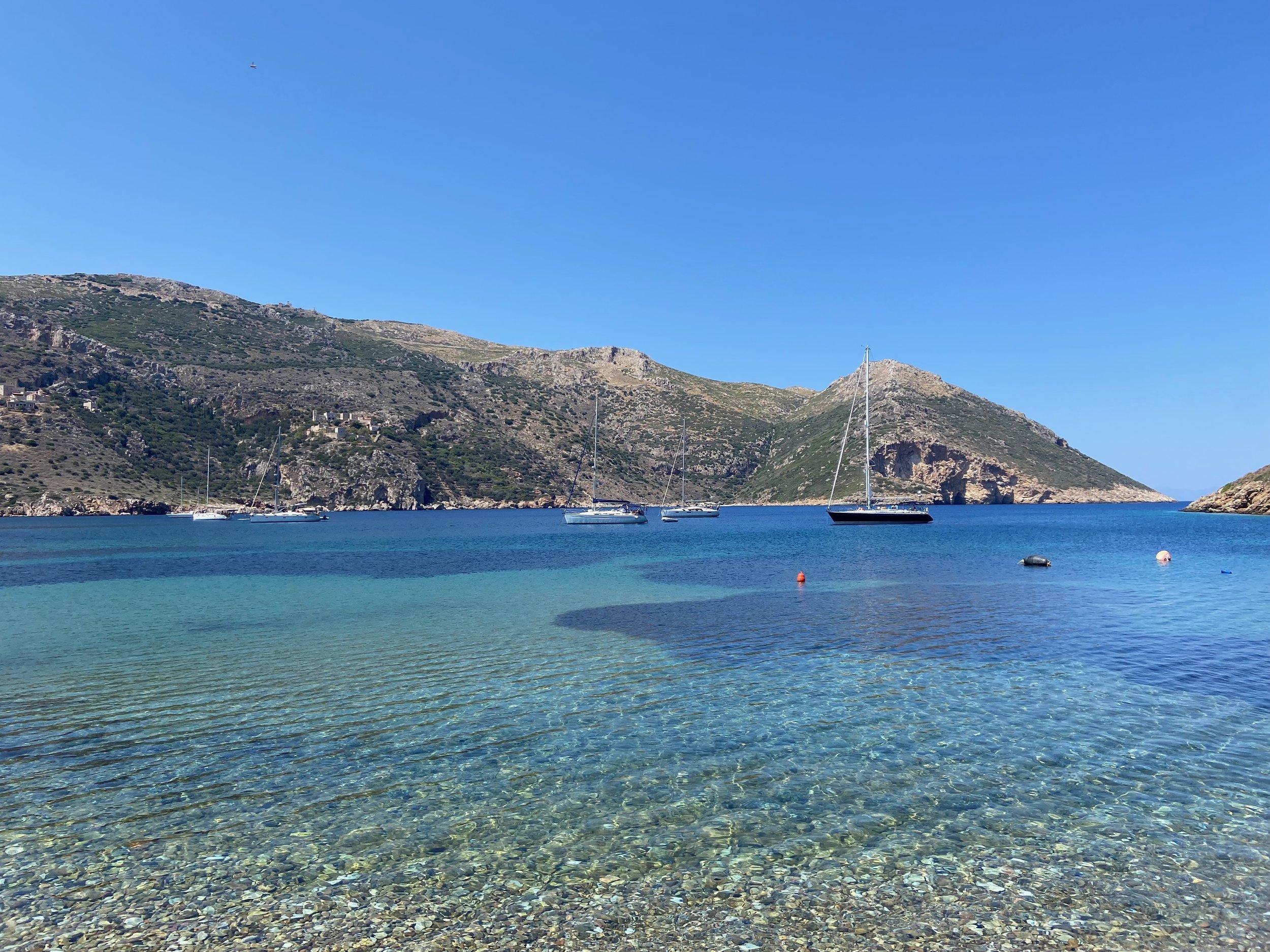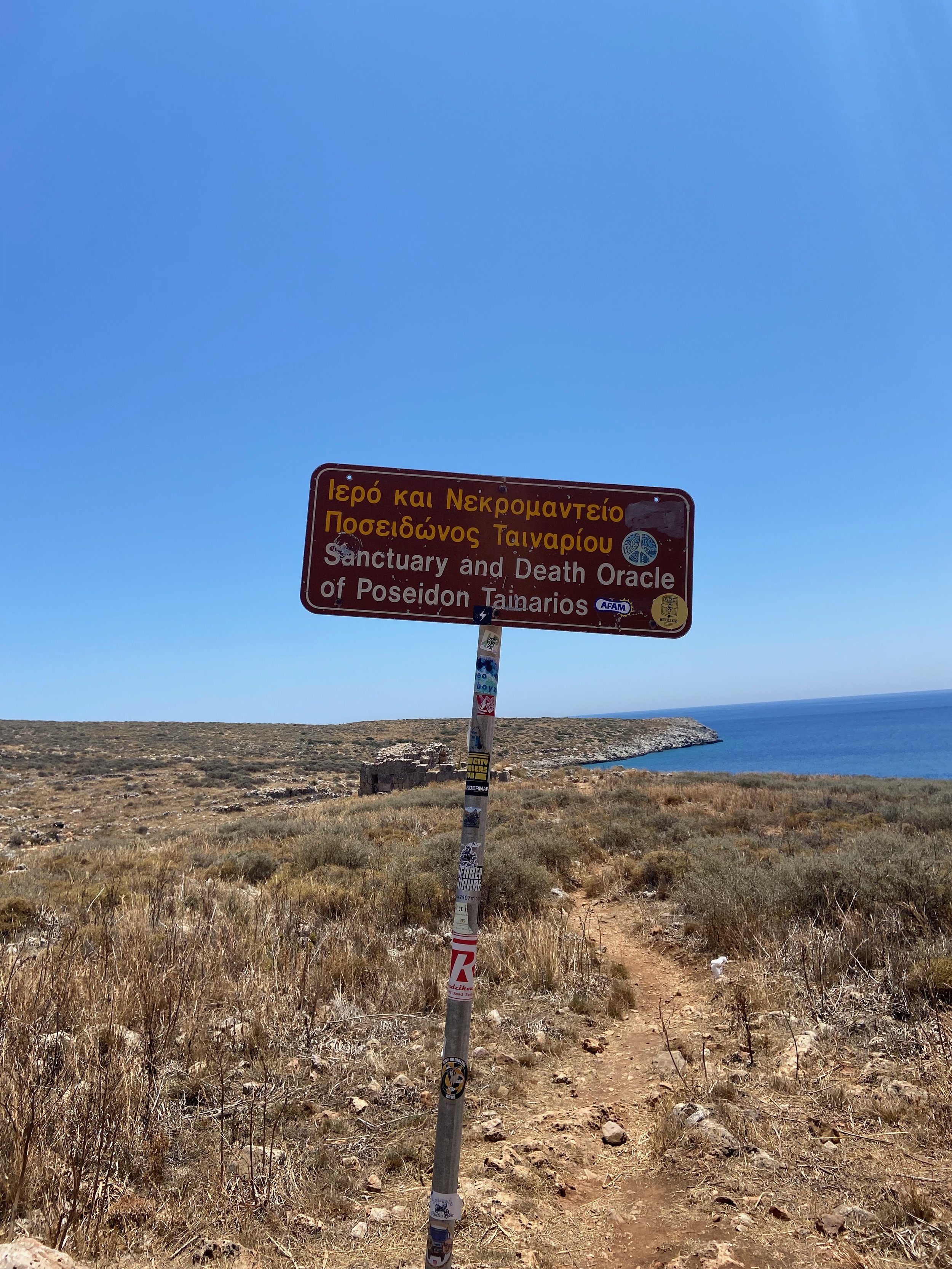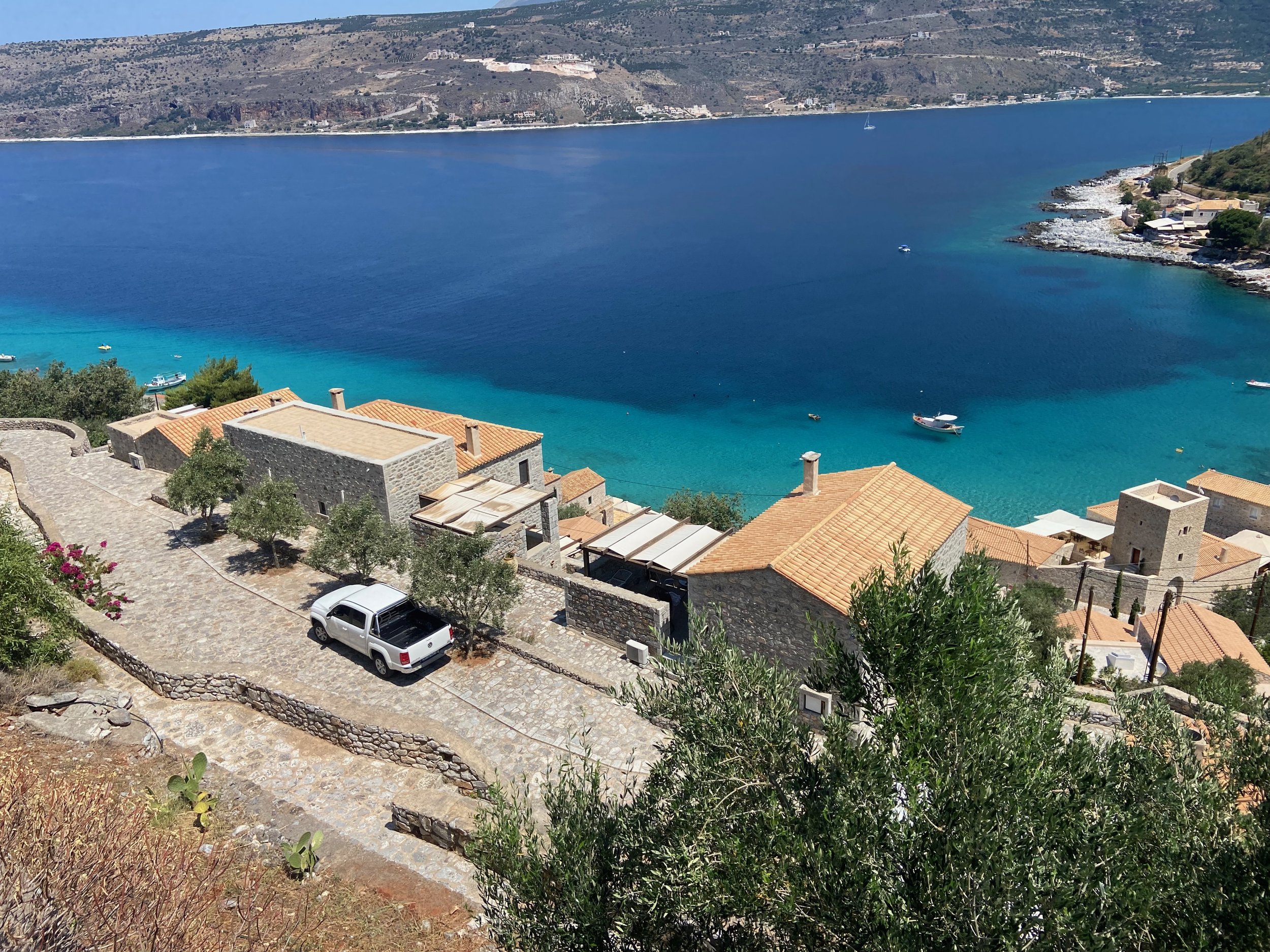The Greece you’ve never heard of — A day in Mani
Mani is the middle finger of Greece, a remote peninsula pointing south toward the Libyan Sahara.
Mount Taygetus, one of the tallest peaks in Greece at just under 8,000 feet, guards the approaches to the region. Ancient Sparta and Mystra are located on its northern flanks. Its broad western shoulder overlooks the town of Kalamata, with magnificent cataracts of solid rock plunging from the dizzying heights, down to the sea.
From there, the Taygetus range marches south peak after craggy peak, ending at Cape Taenerus (also known as Cape Mattapan), the southernmost point of mainland Greece. In ancient times, an underwater cave somewhere near the cape was believed to be the entrance to Hades.
These mountains are like a natural fortress, and served to isolate the area from much of the turmoil that engulfed the rest of Greece back in the day. But the rugged, unforgiving terrain, combined with the harsh climate, also made it virtually impossible to grow crops, or raise livestock in any meaningful way. The only things in relative abundance were fish — and the ubiquitous olive trees. So basically life was an everyday struggle to survive.
The tower houses of Mani began sprouting from the rocks centuries ago as a consequence of the blood feuds that engulfed the whole peninsula, but especially the southern, or “Deep” Mani. Tribal, violent and often lasting years, the feuds took place between clans who would duke it out for supremacy and control of the scarce resources. The tower houses provided a strategic military advantage — the taller your house, the better your chances of pummeling your rivals.
As far as I know, towers such as these are found nowhere else in Greece. They look like they were built by giants using super-sized Lego’s. Tall, rectangular block structures rise up from villages or stand alone on patches of high ground. Some are crenelated like medieval castles. All have thick, solid walls running straight up from their foundations.
By extension, the tribal infighting that gave rise to the towers also endowed the Maniati’s with skills in the use of arms — from flintlock rifles to yataghans (a type of sword) to cannons. So, when they weren’t feuding they were applying their warrior talents to piracy, smuggling and even slave trading. Merchant ships sailing to and from Venice, Constantinople or anywhere else were fair game. If captured, their crews would either be killed or held for ransom, their cargoes looted and stored in mountain caves.
All of which begins to explain why people from Mani, even today, have a somewhat negative reputation among the Greeks. Whenever I mention that my ancestors came from there I get suspicious looks and comments — “Po-po, they are bad people, not to be trusted. Po-po…” or something to that effect. The epithet Maniatiko is used to refer to an untrustworthy person.
Maybe there was once some truth to that, but today the people couldn’t be nicer. Perhaps they recognize a good thing when they see it and are happy to trade their cutlasses and pistols to set up ice cream shops, hotels, seaside restaurants and other features of the tourist trade.
Thankfully, the area remains somewhat undiscovered, when compared to resort destinations like Santorini or Mykonos.
Because it’s a coastal region, Mani has everything the Greek islands do — and more, in my opinion. Spectacular scenery. Great food. Comfortable, even posh accommodations. The roads are easy to navigate and the water blue and crystal-clear, flaring to turquoise closer to shore.
On one of those Greek days you dream about — a limitless blue sky, the weather warm and heating up quickly — I hit the road from my place in Kitries, and headed over the mountain pass toward Kardymili and points south.
My goal was to visit the house where my grandmother was born and introduce myself to my long-lost relatives. I had attempted to do so a few years ago but an old lady stood behind the fence and hollered at me in incomprehensible Greek. If you’ve ever watched season 2 of White Lotus, when the Italian/American guys show up at their relative’s house in Sicily unannounced, it was kind of like that. Only…..worse. This time there was no one home when I arrived. In a way I was relieved…..
From there I went to Kafiona, a tiny hamlet where my grandfather’s family originated. I was told to ask for someone who apparently bought the old house some years ago and converted it to an olive oil factory. A woman told me the gentleman had passed away. I asked if she could point me in the direction of the house and thought I understood her machine-gun-fast Greek, but I guess I didn’t because I couldn’t find the property anywhere and there was nobody else in the sleepy village to ask.
While disappointed I was still in one of my favorite places on Earth, and it was a picture-perfect day, so I kept heading south. The landscape changes quite a bit as you drive toward the cape. The greener, more lush vegetation of the Exo Mani (Outer Mani) to the north gives way to brown, arid, stony ground like something out of Tolkien’s Mordor. It makes you wonder how the olive trees find a way to grow in such a desolate place, but somehow they do.
My first stop after leaving Kafiona was Vatheia, a largely abandoned village with over a dozen towers in various stages of repair. Its location, high up a steep mountainside, affords incredible views of the sea far below. Since it’s right on the main road, Vatheia is easy to access and a great place to go if you want to see authentic tower houses up close.
Another 15 or 20 minutes on I arrived at the cape after passing Marmari Bay, where there’s a sandy beach and a hotel. At the cape you’ll find the Sanctuary and Death Oracle of Poseidon Tanaerus….spooooky. There’s not much left of it but you can follow a path to what is literally the last beach in Greece. I went for a swim in the gorgeous water and could’ve floated there all afternoon. The path continues on to a lighthouse around the point but it was past lunchtime, so I hopped back in the car and headed to Porto Cayo.
This is a sheltered little harbor with what looks like good holding ground. There are always a few yachts swinging to their anchor rodes, surrounded by sheer cliffs and more ruined towers. A few tavernas line the shore and the best is Akrotiri, where I had a simple but delicious lunch of Mani salad with potatoes, tomatoes, a local cheese and Singlino, a smoked and preserved pork product that is delicious. I also had a side of fava — a purée of yellow split peas garnished with pickled onions and capers.
After lunch it was time to start making my way back, and I took the road up the eastern side of the peninsula, over the Kakovouna (Bad Mountains). Not sure why they’re called that but country people everywhere cling to superstition, and I’ve read that the Maniatis kept the old pagan gods long after the rest of Greece became Christian. So maybe it has something to do with a more recent belief in nereids, nymphs and various demons of antiquity. Or maybe it’s just nonsense.
The road north was steep and carved by switchbacks. But incredible views of the Laconian Gulf and the island of Kythira were my reward. About halfway up the peninsula there’s a good road cutting west through a pass in the mountains and emerging at Aereopoli — the city of Ares, god of war, and the capital of Mani.
A made a quick pit stop for ice cream in Limeni, a little hamlet scattered with restaurants and a couple of trendy cocktail bars, overlooking Limeni Bay. It’s a beautiful spot, great for lunch or a drink. And there’s excellent swimming just off the stone buildings fronting the sea.
The towers of Mani are no longer used to bash neighbors to smithereens. But their role in history does make Mani an interesting place to visit, in addition to a stunningly beautiful, delicious and welcoming one. If you go, do me a favor — tell people it’s full of Maniatiki (untrustworthy people) — and maybe they’ll stay away.












